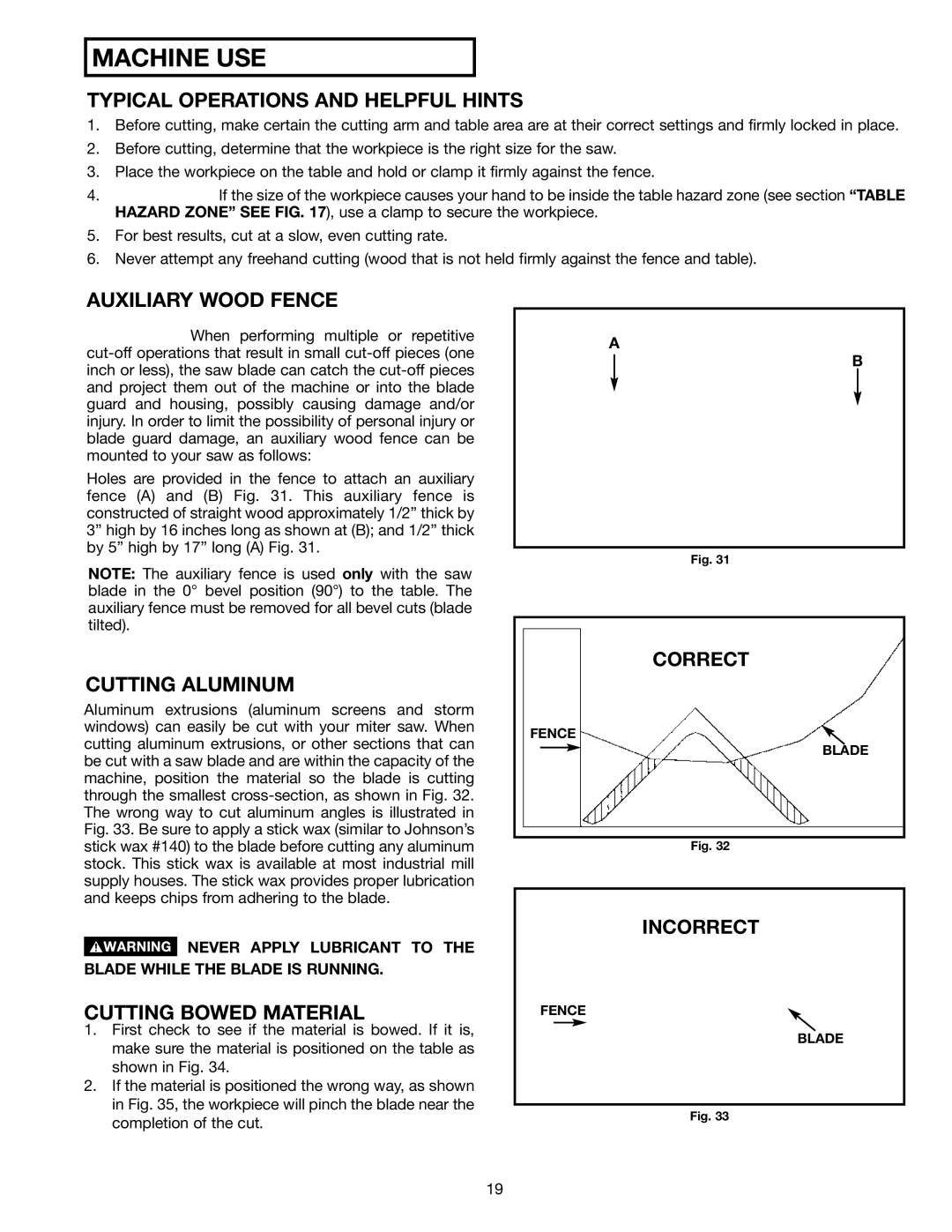
MACHINE USE
TYPICAL OPERATIONS AND HELPFUL HINTS
1.Before cutting, make certain the cutting arm and table area are at their correct settings and firmly locked in place.
2.Before cutting, determine that the workpiece is the right size for the saw.
3.Place the workpiece on the table and hold or clamp it firmly against the fence.
4.![]() If the size of the workpiece causes your hand to be inside the table hazard zone (see section “TABLE HAZARD ZONE” SEE FIG. 17), use a clamp to secure the workpiece.
If the size of the workpiece causes your hand to be inside the table hazard zone (see section “TABLE HAZARD ZONE” SEE FIG. 17), use a clamp to secure the workpiece.
5.For best results, cut at a slow, even cutting rate.
6.Never attempt any freehand cutting (wood that is not held firmly against the fence and table).
AUXILIARY WOOD FENCE
![]() When performing multiple or repetitive
When performing multiple or repetitive
Holes are provided in the fence to attach an auxiliary fence (A) and (B) Fig. 31. This auxiliary fence is constructed of straight wood approximately 1/2” thick by 3” high by 16 inches long as shown at (B); and 1/2” thick by 5” high by 17” long (A) Fig. 31.
NOTE: The auxiliary fence is used only with the saw blade in the 0° bevel position (90°) to the table. The auxiliary fence must be removed for all bevel cuts (blade tilted).
CUTTING ALUMINUM
Aluminum extrusions (aluminum screens and storm windows) can easily be cut with your miter saw. When cutting aluminum extrusions, or other sections that can be cut with a saw blade and are within the capacity of the machine, position the material so the blade is cutting through the smallest
![]() NEVER APPLY LUBRICANT TO THE BLADE WHILE THE BLADE IS RUNNING.
NEVER APPLY LUBRICANT TO THE BLADE WHILE THE BLADE IS RUNNING.
CUTTING BOWED MATERIAL
1.First check to see if the material is bowed. If it is, make sure the material is positioned on the table as shown in Fig. 34.
2.If the material is positioned the wrong way, as shown in Fig. 35, the workpiece will pinch the blade near the completion of the cut.
A
B
Fig. 31
CORRECT
FENCE![]()
![]() BLADE
BLADE
Fig. 32
INCORRECT
FENCE
BLADE
Fig. 33
19
